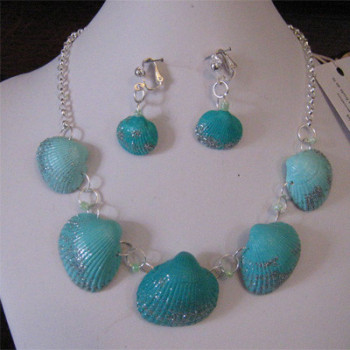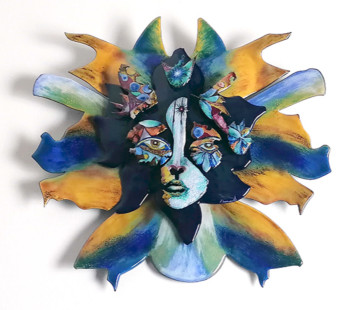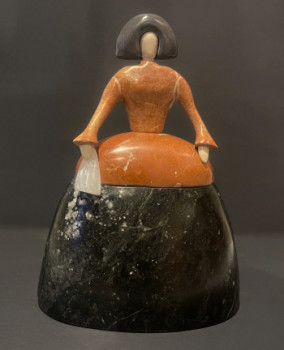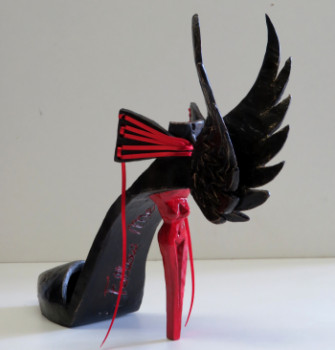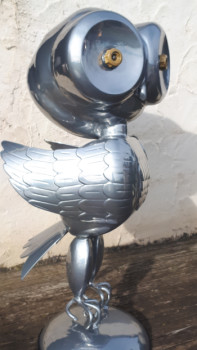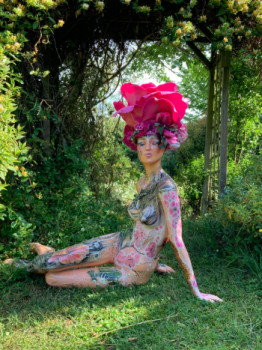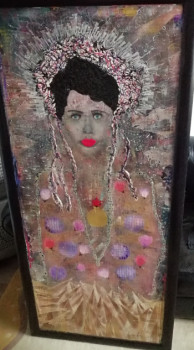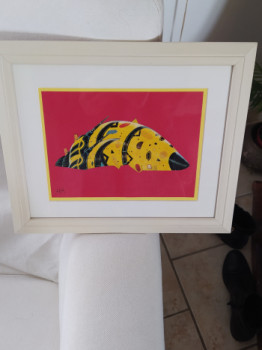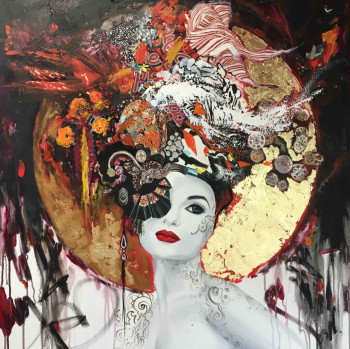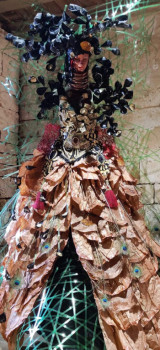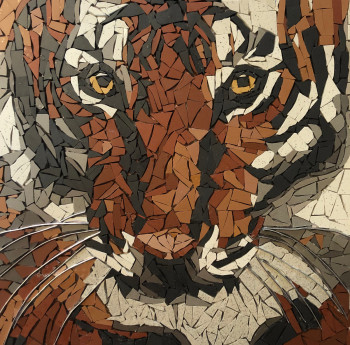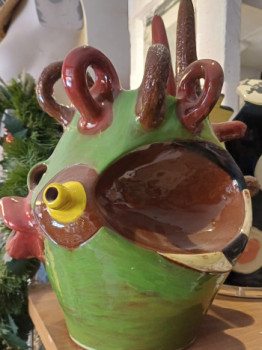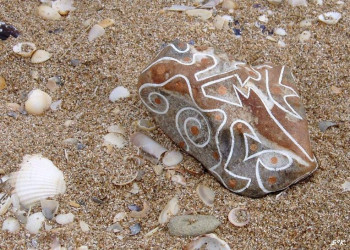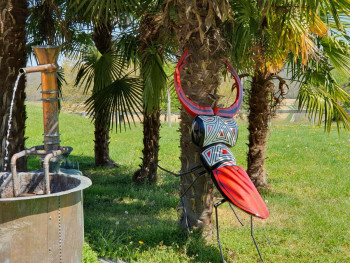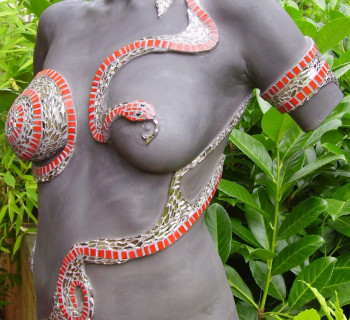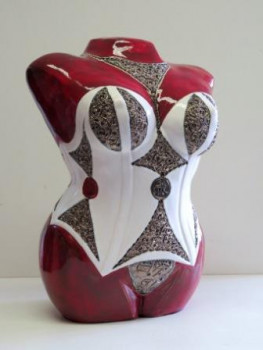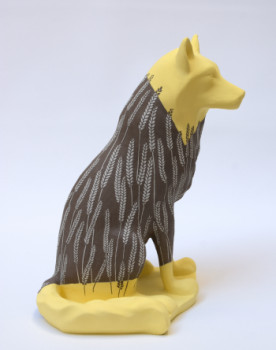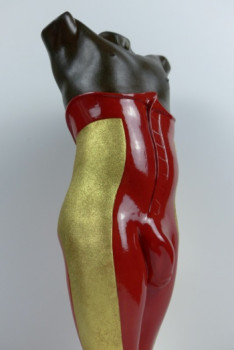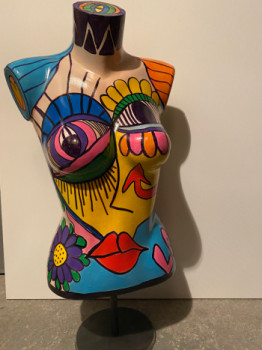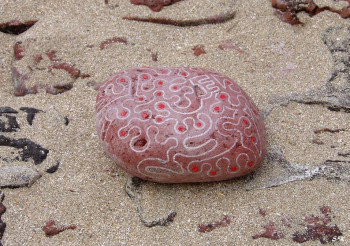
Who is Niki Saint Phalle?
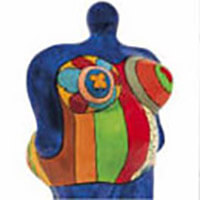
One of the most significant artists of the 20th century, Niki de Saint Phalle has left behind her an indelible mark on the world of art. The artist, versatile, hides many facets: performance paintings through feminist sculptures until to psychoanalytic films. Artist sculptor from the new realism group, she drew her inspiration from the work of Jackson Pollock, Antoni Gaudi and Facteur Cheval. She became a fashion model. to duplicate it for the new generation of sculpture creators.
A busy life
Catherine Marie-Agnès was born on October 29, 1930. She is the second of five siblings children including two boys and three girls.
In 1931, the family left the United States and moved to France, because they had lost their fortune. His father, André Marie Fal de Saint Phalle is a Frenchman. Ruined by the stock market crash in 1929, he had toû give up the New York bank Saint Phalle&Co which belonged to him.
In August 1933, Catherine joined her parents in the United States, abroad. Greenwich where she is raised by a nanny whom she calls « Nana ». Her mother, Jeanne Jacqueline Harper, American, nicknamed her « Niki » at the age of 4 years. In 1936, at When she was 6 years old, Catherine lived in the 88th East Street neighborhood in New York. New York and works in the religious school of the sacred heart. Her favorite subject is calligraphy, the future artiste is familiarizing herself with the writing of well-kept letters.
When she was 11, her father abused her. of her. It's a trauma that she can't get over. heal yourself. Later, she explains that art is the only medicine that was able to calm her and relieve her pain. His favorite phrase: « I was lucky enough to encounter art because I had, on a psychological level, everything it took to become a terrorist. Instead, I used the rifle for the good cause, that of art. »
about his work and his love life
For a time, she worked as a model for Life Magazine and Vogue. She began her career at at the age of 17. A year later, Catherine married the writer Harry Mathews. The sculptor who displayed a strong character, rejects religious puritanism and McCarthyism. After the birth of their little daughter, Laura, the family moved to Paris. Paris.
The year 1950 marked a turning point in his life. Niki de Saint Phalle suffers from serious depression and is followed in a hospital in Nice. Before she comes out, she spends her days at home. paint and draw. It’s the click! She then wants to devote her life to; this art that she particularly likes.
In 1955, her second child, Philip, was born. and the tribe sets down its suitcases; Madrid. She then met the architect Antoni Gaudi. based in Barcelona and greatly appreciates his work. The following year, at Paris, the artist Jean Tinguely supported her for join the group of New Realists, created by around the 1960s by Pierre Restany and Yves Klein. Their work highlights the poetic recycling of the urban, advertising and industrial environment. Their way of doing things will influence that of the Franco-American artist.
In 1960, the latter left her first husband for Jean Tinguely. The two individuals work in a Parisian workshop where they work together. she designed her first series of shots. These scandalize at first glance, but are then applauded by an international audience. In 1964, the famous Nanas in glued paper and resin appeared. Niki de Saint Phalle affirms that these monumental women are not subject to violence; the institution of marriage and masochism. According to her, these sculptures are free in their bodies and heads. They don't need men to be good.
A committed feminist, Niki creates colorful phalluses to encourage the use of condoms when the virus AIDS has spread. She also fights against racism and violence against black Americans. Following the death of her husband in 1991, she built a museum in tribute to his father. Tinguely and fights for his works to be recognized. She died in 2002 at San Diego to at the age of 71.
His best-known works
1961 shooting
In 1961, this work was presented to the public during the exhibition « Fire will » the J. Niki de Saint Phalle gallery is at comfortable handling the rifle and is an excellent shooter. She aims for pockets filled with colors hanging on the wall. a sculpted plaster panel; or with objects to enhance it. Once pierced by the balls, the pockets release the color which flows onto the board. The works are quite similar to the drippings of Jackson Pollock. For her, it's a way of saying no to something new. the injustice suffered in society.
My heart belongs to Black Rosy in 1965
Niki rebels against the violence inflicted on black people by serving as their voice. The artist denounces the racial segregation which refused to let a white person sit on a bus in Alabama. This immense sculpture with broad shoulders and covered in colorful clothing is one of his many works. black skin.
Daddy (1972–1973)
His videos are still unknown to the public. With the help of director Peter Whitehead, Niki de Saint Phalle produced the experimental film Daddy. The latter highlights a sort of settling of scores and expresses feelings of rejection towards others. towards his father. The film combines hatred, sexual perversion and love.
Tarot Garden (1979-1993
For twenty years , Niki has dedicated to his time at create this work located in Capalbio in Italy. Supported by Jean Tinguely, she built the structures of the garden monuments on the 22 main arcana of the tarot. The High Priestess, the figure of the Magician or the Hangman are visible there. Part of the buildings are habitable and feature mosaics made with ceramic or mirror debris. The work which was inaugurated in 1998 is a small reminder of the works of Antoni Gaudi. An artist who captured the heart of Niki Saint Phalle.
Découvrez quelques oeuvres inspirées de Saint Phalle
